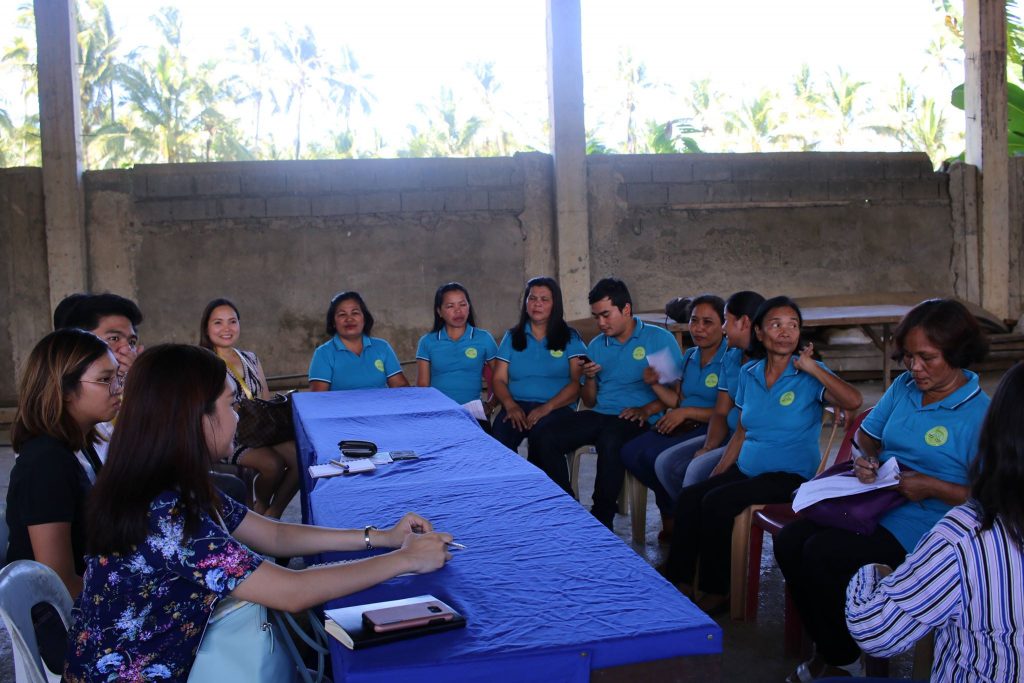On October 10 to 12 2018, representatives from the UP Resilience Institute joined the Department of Social Welfare and Development (DSWD) Kapit-Bisig Laban sa Kahirapan-Comprehensive and Integrated Delivery of Social Services (Kalahi-CIDSS) Program on its 1st Multi-stakeholder Assessment on Local DRRM-CCA Gaps in Carmen, Surigao del Sur. The Kalahi-CIDSS Program seeks to empower local communities to achieve improved access to basic services through the institutionalization of community-driven development. In response to the debilitating effects of disasters on community beneficiaries, the strengthening and mainstreaming of DRRM-CCA has been identified as a priority component of the program. The UP Resilience Institute was one of the academic and civil society partners invited to participate in the field exposure trip to help develop policies, plans, and strategies for building community resilience.
Other participants came from the Department of Finance, Department of Agriculture, and Rappler-Move.PH. Along with Mayor Jane Valeroso-Plaza of Carmen, Surigao del Sur, the group visited the barangays of Hinapoyan and Antao to take part in focus group discussions with local officials and community volunteers.
In Barangay Hinapoyan, participants were shown the projects implemented under the Kalahi-CIDSS program which included access roads, gabions, box culverts and solar-powered street lights. These projects were chosen by community members themselves as priorities to improve transport of agricultural products and to mitigate hazards such as flooding. Volunteers shared their experiences working under the program, and the team learned that the implementation of these projects have improved the quality of life of the community, especially in terms of safeguarding their households, by reducing flooding incidents. They have also said that they felt empowered by the program as they gained knowledge on climate change, the hazards present in their area and how to mitigate them as well as skills in project planning and management.
In Barangay Antao, the team had the opportunity to talk with barangay officials on how they discovered the issues affecting their locality and their criteria for project prioritization. The team found that the barangay’s location on a flood plain has resulted in agricultural fields often being inundated during heavy rains. With the Kalahi-CIDSS, they were able to build a footbridge to help them cross in times of flooding, an access road, and a food terminal where they can sell their agricultural products. They have noted that with the construction of the access road, profits have increased since they no longer have to pay laborers to carry their products.
The Kalahi-CIDSS DRRM-CCA team has introduced hazard and poverty maps, environmental management filters, and other simple analytical tools to help communities make informed decisions. This has allowed community beneficiaries to gain insights on the prioritization of risk-mitigation measures and disaster/emergency lifeline facilities appropriate for their area.





